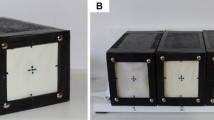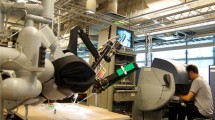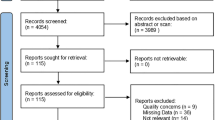Abstract
Objective
The lack of haptic feedback (HF) in robotic surgery is one of the major concerns of novice surgeons to that field. The superior visual appearances acquired during robotic surgery may give clues that make HF less important.
Methods
We surveyed 52 individuals on their perception of HF during robotic surgery. The first group of 34 surgically inexperienced people used the da Vinci robot for their first time (drylab). The second group included 8 laparoscopic surgeons with experience up to a fifth robotic operation. The third group included 10 surgical experts with substantial experience (150-650 robotic cases). Visual analog assessment was made of perception of HF, how much HF was missed, how much the absence of HF impaired the operators’ level of comfort. Robotic experts were asked if complications have occurred as a result of a lack of HF.
Results
Of the first group, 50% reported the perception of HF, as did 55% of the second group and 100% of the third group (difference between group 1 and group 3: p < 0.05). The first group missed HF for 6.5; the second group for 4.3, and the third group for 4 (difference between groups 1 and 3: p < 0.05). The surgical experts claimed to have missed HF for 7.2 s when they first started robotic surgery (Difference to now: p < 0.05). The lack of HF caused discomfort for the first group of 4; for the second group of 4,4, and for the third group of 2,6. One complication was reported by the robotic experts as resulting from the lack of HF.
Conclusions
The data support the conclusion that even beginners quickly experience the perception of HF when performing robotic surgery. With more experience, perception of HF and the level of comfort with robotic surgery increases significantly. This perception of HF makes “real” HF less important and demonstrates that its importance is overestimated by novices in robotic surgery.
Similar content being viewed by others
References
Akamatsu M, MacKenzie IS, Hasbroucq T (1995) A comparison of tactile, auditory, and visual feedback in a pointing task using a mouse-type device. Ergonomics 38:816–827
Ballantyne GH, Moll F (2003) The da Vinci telerobotic surgical system: the virtual operative field and telepresence surgery. Surg Clin North Am 83:1293–304, vii
Bholat OS, Haluck RS, Kutz RH, Gorman PJ, Krummel TM (1999) Defining the role of haptic feedback in minimally invasive surgery. Stud Health Technol Inform 62:62–66
Bholat OS, Haluck RS, Murray WB, Gorman PJ, Krummel TM (1999) Tactile feedback is present during minimally invasive surgery. J Am Coll Surg 189:349–355
Kaul S, Shah NL, Menon M (2006) Learning curve using robotic surgery. Curr Urol Rep 7:125–129
Kim HL, Schulam P (2004) The PAKY, HERMES, AESOP, ZEUS, and da Vinci robotic systems. Urol Clin North Am 31:659–669
Kitagawa M, Dokko D, Okamura AM, Yuh DD (2005) Effect of sensory substitution on suture-manipulation forces for robotic surgical systems. J Thorac Cardiovasc Surg 129:151–158
Maniar HS, Council ML, Prasad SM, Prasad SM, Chu C, Damiano RJ (2005) Comparison of skill training with robotic systems and traditional endoscopy: implications on training and adoption. J Surg Res 125:23–29
Omata S, Murayama Y, Constantinou CE (2005) Multi-sensory surgical support system incorporating, tactile, visual and auditory perception modalities. Stud Health Technol Inform 111:369–371
Rassweiler J, Safi KC, Subotic S, Teber D, Frede T (2005) Robotics and telesurgery—an update on their position in laparoscopic radical prostatectomy. Min Invas Ther Allied Technol 14:109–122
Sim HG, Yip SKH, Cheng CWS (2006) Equipment and technology in surgical robotics. World J Urol 24:128–135
Tholey G, Desai JP, Castellanos AE (2005) Force feedback plays a significant role in minimally invasive surgery—results and analysis. Ann Surg 241:102–109
Author information
Authors and Affiliations
Corresponding author
Rights and permissions
About this article
Cite this article
Hagen, M.E., Meehan, J.J., Inan, I. et al. Visual clues act as a substitute for haptic feedback in robotic surgery. Surg Endosc 22, 1505–1508 (2008). https://doi.org/10.1007/s00464-007-9683-0
Received:
Accepted:
Published:
Issue Date:
DOI: https://doi.org/10.1007/s00464-007-9683-0




